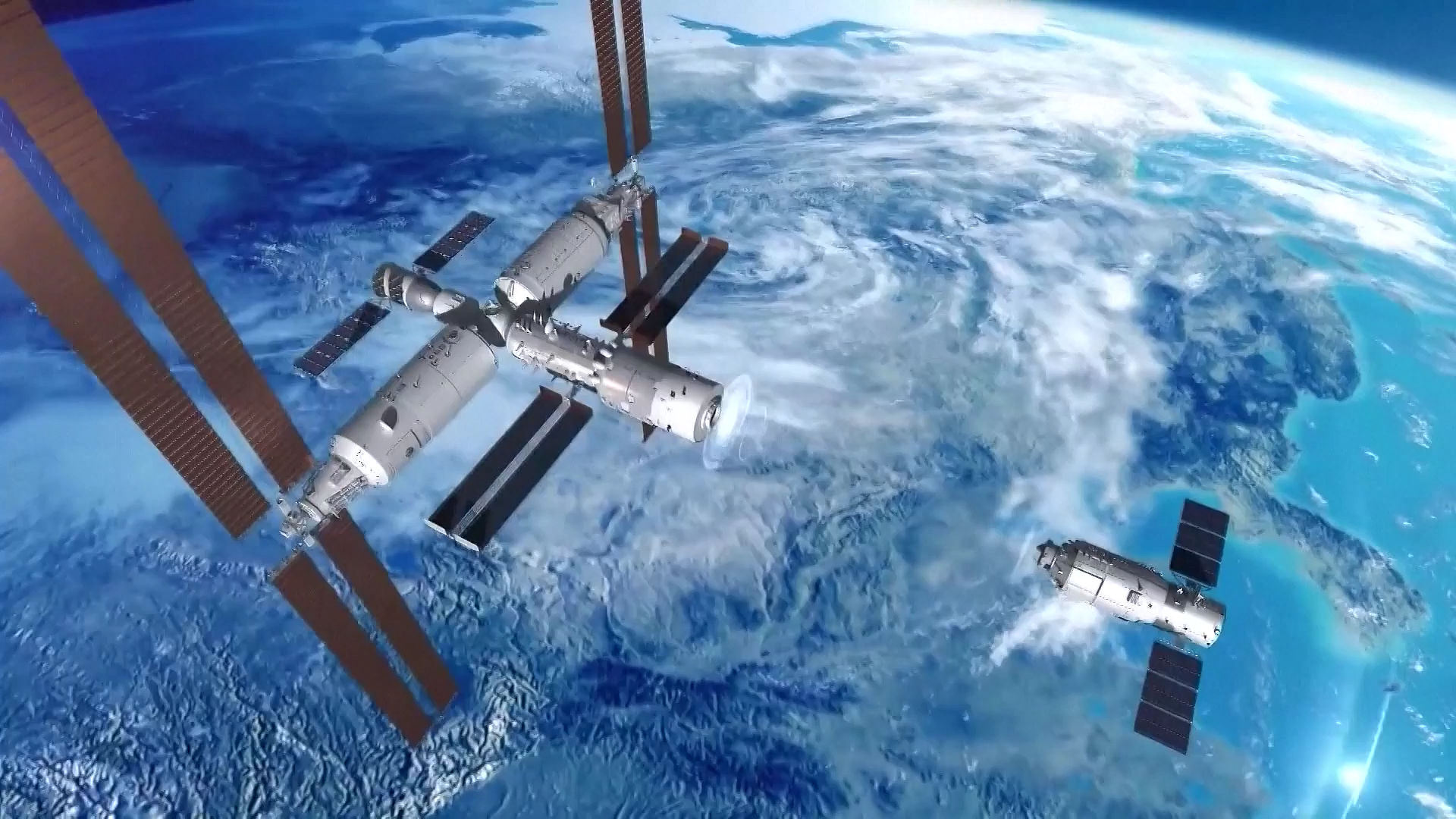China Forges Ahead in Space

The simulated image shows China's cargo spacecraft Tianzhou-7 docking with the Tiangong space station. (PHOTO: CHINA MANNED SPACE)
Edited by GONG Qian
Looking back to the past decades, China has ramped up its solar system and space science exploration to become a powerful player in the field with many major feats. They include the Chang'e 5 mission, China's fifth lunar exploration that brought back lunar samples in 2020; the Zhurong rover landing on Mars in 2021; and the crews of Shenzhou-15 and Shenzhou-16, China's manned aircraft, meeting in space in 2023. These and other impressive achievements have given a huge boost to space science and the science community.
China is now building on these accomplishments with a series of major missions across the next decade, Astronomy Magazine reported.
Its space exploration programs in 2024 and near future include Chang'e-6 missions to collect more lunar samples and four more spacecraft missions.
Eye-catching missions in 2024
In January, the Tianzhou-7 cargo craft was sent to Tiangong, China's space station. The three-hour docking was "fuel and technology intensive", said SpaceNews. The Tianzhou spacecraft has recently been upgraded and can carry around 7,400 kg of cargo to Tiangong. This improvement means now China needs to launch a resupply mission once every eight months instead of once every six months, according to Space.com.
Additionally, China plans to launch three further missions to Tiangong this year — the Shenzhou-18 and 19 crewed missions and the Tianzhou-8 mission.
The world is awaiting another big move in lunar exploration. The Chang'e-6 mission, scheduled to take place later this year, is tasked with bringing back samples from the far side of the moon, a never-before accomplished feat, Universe Today reported on its website.
China's consistent investment in and dedication to space discovery are evidenced by this newest endeavor, another significant stride that propagates not just national but international astrophysical knowledge, said ISP Today.
"With the future Chang'e 6 mission, the limits of human exploration will be pushed even farther, as we seek to unveil the mysteries that lie in the shadowed craters and rugged terrain of our Moon's silent sentinel," ISP Today noted.
Forging international collaborations
Already one of the world's top space powers, China is increasingly looking to forge international collaborations.
The Chang'e-6 is expected to carry equipment from France, Italy, the EU and Pakistan on the mission's lander and orbiter. This level of international participation highlights the global interest in lunar exploration and the growing recognition of China's capabilities in space missions, said Space Daily.
The China National Space Administration (CNSA) has announced opportunities to join both the Chang'e-7 and Chang'e-8 missions, which are expected to be launched in 2026 and 2028, respectively.
According to BNN Breaking, the Chang'-e 8 mission shows the power of collaboration and innovation in space exploration. By inviting developers from around the world to contribute to the mission, the CNSA is fostering a global community of space enthusiasts and experts working towards a common goal. This is necessary to push the limits of what's possible in space exploration and unlock the secrets of the universe.
With future missions in the pipeline, China is paving the way for the construction of an International Lunar Research Station. As one of the initiators of the program, China is inviting more global partners to participate in it.
It is clear that China continues to advance its capabilities and has set out a roadmap to comprehensively explore the solar system via lunar, planetary and deep-space missions. These in turn are strengthening and inspiring China's scientific community, and will bring new value, science and impetus to astronomy and space exploration, Astronomy Magazine added.







